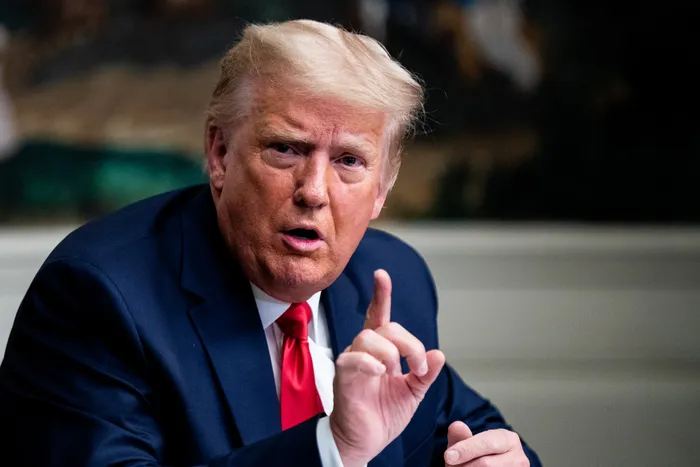Investment Perspectives: Q1 shows signs of global economic weakness amid trade fragmentation
GLOBAL TRADE

US President Donald Trump.
Image: Erin Schaff / Getty Images / AFP
By Mark Phillips
The global economy showed resilience in 2024, but signs of weakness are emerging against a backdrop of slower growth, persistent inflation, and an uncertain policy environment, according to the OECD’s latest Interim Economic Outlook.
The report highlights risks, notably that further tradefragmentation could harm global growth prospects.The outlook projects global growth slowing to 3.1% in 2025 and 3.0% in 2026, with significant regional variation.
Inflation is expected to remain higher than previously forecast, though still moderating asgrowth slows. The US economy entered 2025 in good shape, marked by cooling inflation, solid growth, andexpectations of rate cuts.
However, US consumer sentiment dipped in January for the first time in six months, hitting a three-month low, driven by growing concerns about unemployment and the inflationary effects of the new tariffs.
The escalation of trade tensions between the US and China has heightened fears of a global economic slowdown, underscoring how ongoing trade disputes could hamper global growth.
Uncertainty surrounding the US economic outlook is at its highest since the COVID-19 pandemic. Abroad implementation of tariffs would likely raise inflation risks, depress equities, and potentially impede US economic growth.
South Africa
The outlook for South Africa remains mixed. Figures released in March 2025 showed disappointing GDP growth in 2024, with the economy expanding just 0.6%, below expectations of over 1%.
The South African Reserve Bank’s Monetary Policy Committee cut the repo rate by 0.25% in January 2025 but opted to hold it steady in March, reflecting growing concerns about the global outlook and potential tariff impacts.
A historic event in Q1 2025 was the postponement of the National Budget, exposing tensions within the coalition government. The delay sparked by disagreements over the proposed VAT increase, highlighted misalignment among partners in the Government of National Unity on key economic policies.
What will Trump 2.0 mean for economic policy?
The global outlook has deteriorated due to harsher-than-expected US tariffs, raising the risk of slowergrowth, higher inflation, and potential recessions in export-dependent economies. The Trump tariffsrepresent one of the most significant disruptions to global trade in decades.
Federal Reserve Chair Jerome Powell has warned that Trump’s tariffs could fuel higher inflation and slower growth. A weakening US outlook poses risks to global economic prospects.
Accordingly, the outlook remains uncertain, with fears of a possible US recession. It is important to note that this situation remains fluid.
We are actively tracking US-China trade relations and global economic indicators. We remain vigilant in navigating political risks in the months ahead. Closely monitoring developments in US trade policy and their implications for emerging markets will be key.

Mark Phillips is the head of portfolio management and analytics at PPS Investments.
Image: LinkedIn
* Mark Phillips is the head of portfolio management and analytics at PPS Investments.
** The views expressed do not necessarily reflect the views of IOL or Independent Media.
BUSINESS REPORT